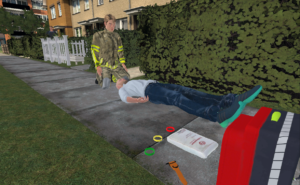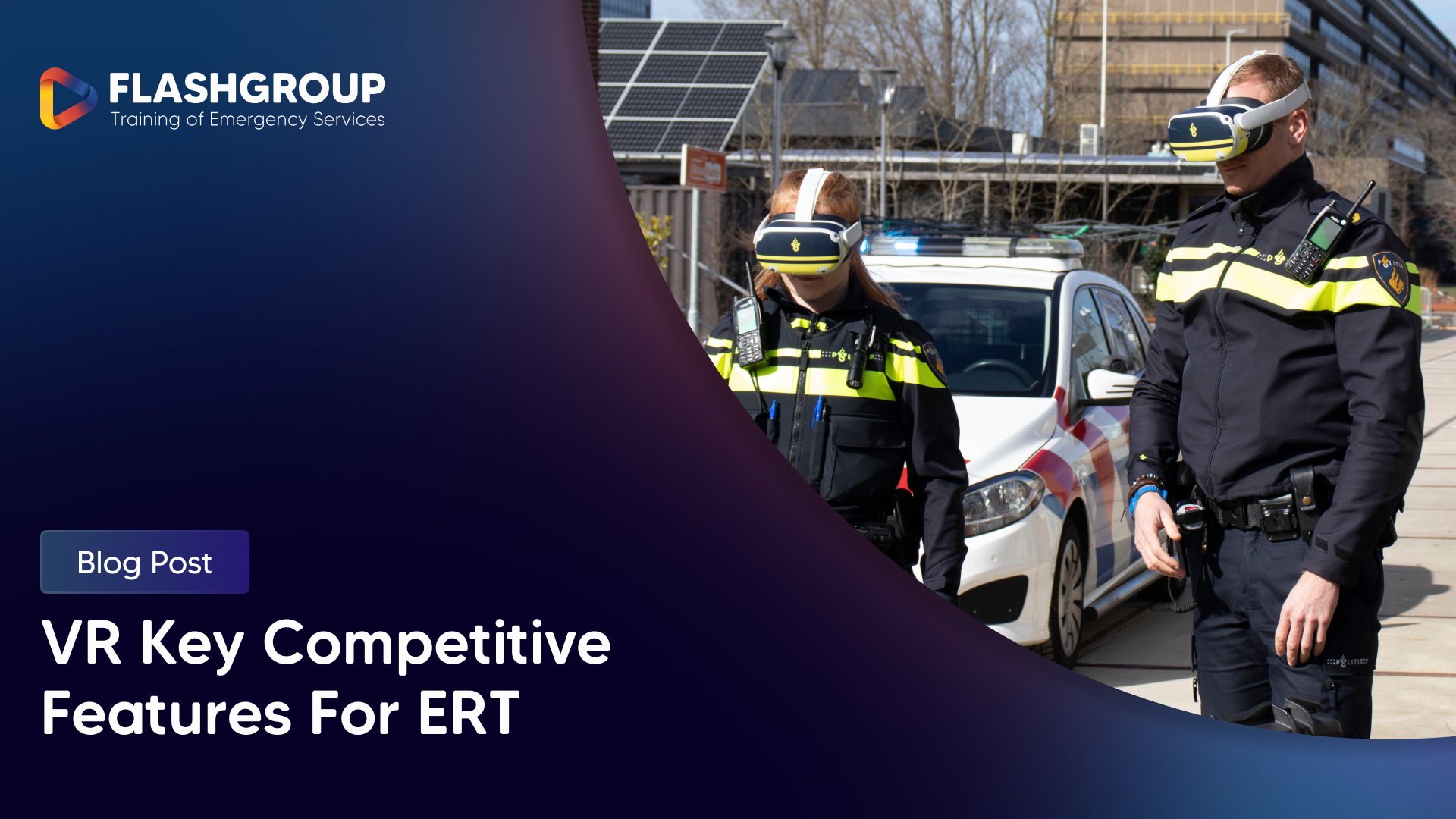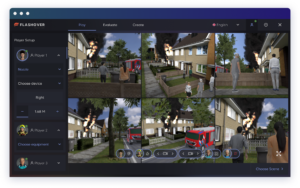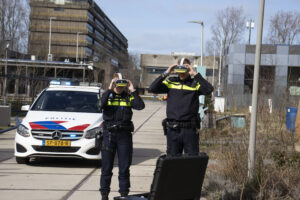With years of experience in the computer simulation and gaming industry, our team at Flashgroup has created ground-breaking VR training solutions. Both for governmental organizations and the emergency response industry. We deliver XR solutions for emergency services by integrating real-world equipment, multiplayer simulations and customized content. All that with the focus on first responder professionals.
The focus is set on multidisciplinary training, for which you can check our products here – Flashover, Flashpoint and Flashaid.

In this blog, we will dive into the effectiveness of VR and key competitive features in VR. Also how they reshape the future of emergency response training.
Effectiveness of Virtual Reality in Emergency Response Training
VR is making breakthroughs. By all means, not just about the hardware but equally about the immersive content tailored to industry-specific training needs and learning opportunities according to Forbes. One of them is – emergency service training. Being that, VR training resulted in skill improvement for first responders. Including a 46% reduction in mistakes, a 29% increase in speed, and a 36% overall better performance according to a study conducted on Performance Evaluation in VR/AR training. It is often shown that Virtual Reality is just as good or even better for specific learning outcomes and safety training results due to its immersive training solutions.
Key Competitive Features in VR in Emergency Response Training
We will be honest. There are many, which you can also find in our Features section. Let’s start with immediate feedback and motion tracking. They allow for improved and automated workflow, adding to enhanced preparedness and group training. These innovative features provide end-users (trainees and instructors) with more confidence in decision-making. All while being in a controlled and safe environment. According to Commander Keith Noble of ATCEMS, traditional training used to involve a PowerPoint presentation. What happened was that a better way of doing things through AR and VR was found. XR (VR&AR) has lower costs and allows for versatile training and emergency situations, as localised content and tailored training safety scenarios are being created.

Sneak Peak into Flashover’s Scenario Scene
Moreover, VR safety training can be frequently repeated. As opposed to the costly traditional method, which could be done once and not again for years — if ever again.
As a result, besides all the information above, there is no doubt that VR safety training solutions and VR technology are growing rapidly. Stay up to date with all the upcoming news within the industry. Would you like to request a demo? Contact Our Experts.


